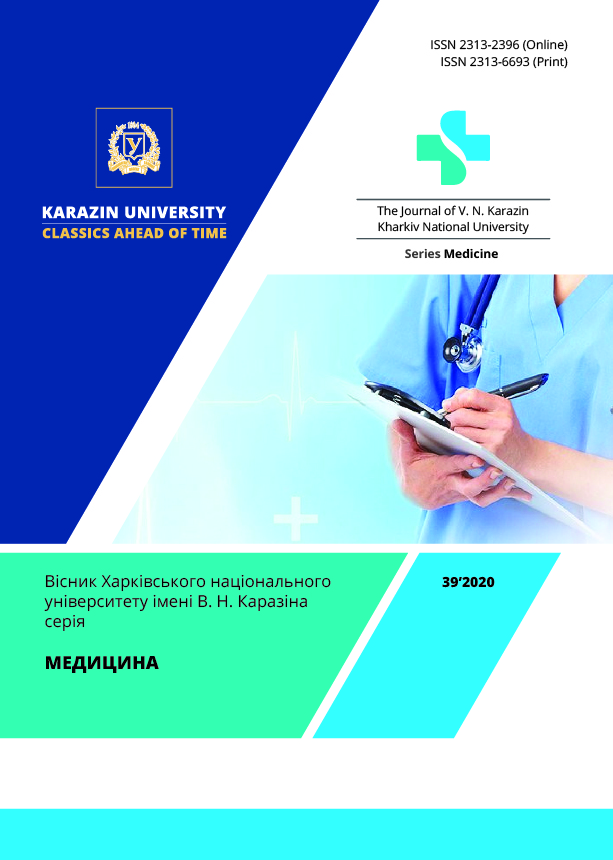Clinical characteristics of patients with atrial flutter before radiofrequency ablation
Abstract
Introduction. Radiofrequency ablation (RFA) is today the method of choice for the ineffective medical treatment of atrial fibrillation (AF), but its course is often complicated by comorbid pathology. The predicted great impact of these nosologies on the effectiveness of radiofrequency ablation of the arrhythmia substrate requires additional study before RFA.
Objectives – to analyze the clinical characteristics of patients with isolated atrial fibrillation and combination with of atrial fibrillation with atrial flutter (AF + AFib) that underwent radiofrequency ablation of the arrhythmia substrate.
Materials and methods. 84 patients aged 65 ± 9 (82.3 % of men) were examined, who underwent RFA of the arrhythmia substrate: cavo-tricuspid isthmus (CTI) or combined with pulmonary veins isolation (CTI + PV) strategy for patients with AFib. Before radiofrequency ablation, the following clinical indicators were assessed: forms of AF + AFib, the presence of chronic heart failure (CHF) and functional classes (FC) according to NYHA classification, the forms of chronic coronary syndromes (CCS): postinfarction cardiosclerosis, syndrome-X, functional classes of stable angina (SA), stages of arterial hypertension (AH), the presence of type 2 diabetes or stroke in the anamnesis.
Results. Radiofrequency ablation of isolated atrial fibrillation was more often performed for persistent arrhythmia in patients with stable angina III FC, arterial hypertension stage 2 and 3, radiofrequency ablation of combination of atrial fibrillation with atrial flutter – equally often for persistent or paroxysmal form in patients with SA I and II class, AH stage 2 and 3; in both cases patients with chronic heart failure II and III FC more often needed radiofrequency ablation of the arrhythmia substrate.
Conclusions. Given the lack of correlation between clinical and demographic characteristics, it is advisable to continue studying their prognostic effect on the course of comorbid pathology and treatment of patients after radiofrequency ablation of the arrhythmia substrate of atrial fibrillation and combination of atrial fibrillation with atrial flutter.
Downloads
References
Fuster, V., Rydén, L., Asinger, R. (2018). ACC/AHA/ESC Guidelines for the Management of Patients With Atrial Fibrillation: Executive Summary A Report of the American College of Cardiology. American Heart Association. Circulation, 2001;104, 2118–2150. doi:10.1161/circ.104.17.2118.
Blomström-Lundqvist, C., Scheinman, M., Aliot, E. (2003). ACC/AHA/ESC Guidelines for the Management of Patients With Supraventricular Arrhythmias—Executive Summary. Circulation, 108, 1871–1909. doi:10.1161/01.CIR.0000091380.04100.84.
Packer, D., Mark, D., Robb, R. (2018). Catheter Ablation versus Antiarrhythmic Drug Therapy for Atrial Fibrillation (CABANA) Trial: Study Rationale and Design. American Heart Journal, 199, 192–199. doi:10.1016/j.ahj.2018.02.015.
Sychov, O. S., Kovalenko, V. M., Dziak, H. V. (2011). Diagnosis and treatment of atrial fibrillation. Recommendations of the working group on cardiac arrhythmias of the Association of Cardiologists of Ukraine. Retrieved from https://strazhesko.org.ua/upload/2014/02/20/book_ukr_-10-2011-_preview.pdf.
Ponikowski, P., Voors, A., Anker, S. (2016). 2016 ESC Guidelines for the diagnosis and treatment of acute and chronic heart failure: The Task Force for the diagnosis and treatment of acute and chronic heart failure of the European Society of Cardiology (ESC) Developed with the special contribution o. European Heart Journal, 37(27), 2129–2200. doi:10.1093/eurheartj/ehw128.
Yancy, C., Jessup, M., Bozkurt, B. (2013). 2013 ACCF/AHA Guideline for the Management of Heart Failure. Circulation, 128, e240–e327. doi:10.1161/CIR.0b013e31829e8776.
Knuuti, J., Wijns, W., Saraste, A. (2019). 2019 ESC Guidelines for the diagnosis and management of chronic coronary syndromes: The Task Force for the diagnosis and management of chronic coronary syndromes of the European Society of Cardiology (ESC). European Heart Journal, ehz425. doi:10.1093/eurheartj/ehz425.
Force Members, T., Montalescot, G., Sechtem, U., Achenbach, S., Andreotti, F., Arden, C., Budaj, A., Bugiardini, R., Crea, F., (2013). 2013 ESC guidelines on the management of stable coronary artery disease: the Task Force on the management of stable coronary artery disease of the European Society of Cardiology. Eur Heart J, 34(38), 2949–3003. doi:10.1093/eurheartj/eht296.
Williams, B., Mancia, G., Spiering, W. (2018). 2018 ESC/ESH Guidelines for the management of arterial hypertension. European Heart Journal, 39(33), 3021–3104. doi:10.1093/eurheartj/ehy339.
Kirchhof, P., Calkins, H. (2017). Catheter ablation in patients with persistent atrial fibrillation. European Heart Journal, 38(1), 20–26. doi:10.1093/eurheartj/ehw260.
Link, M., Haïssaguerre, M., Natale, A. (2016). Ablation of Atrial Fibrillation. Circulation, 134, 339–352. doi:10.1161/CIRCULATIONAHA.116.021727.
De Sensi, F., De Potter, T., Cresti, A. (2015). Atrial fibrillation in patients with diabetes: molecular mechanisms and therapeutic perspectives. Cardiovasc Diagn Ther, 5(5), 364–373. doi:10.3978/j.issn.2223-3652.2015.06.03.
Anselmino, M., Matta, M., D'ascenzo, F. (2015). Catheter ablation of atrial fibrillation in patients with diabetes mellitus: a systematic review and meta-analysis. EP Europace, 17(10), 1518–1525. doi:10.1093/europace/euv214.
Mukherjee, R., Williams, S., Niederer, S. (2018). Atrial Fibrillation Ablation in Patients with Heart Failure. Arrhythmia & Electrophysiology Review, 7(2), 84–90. doi:10.15420/aer.2018.11.3
The Journal of V. N. Karazin Kharkiv National University, series Medicine has following copyright terms:
- Authors retain copyright and grant the journal right of first publication with the work simultaneously licensed under a Creative Commons Attribution License that allows others to share the work with an acknowledgement of the work’s authorship and initial publication in this journal.
- Authors are able to enter into separate, additional contractual arrangements for the non-exclusive distribution of the journal’s published version of the work, with an acknowledgement of its initial publication in this journal.
- Authors are permitted and encouraged to post their work online prior to and during the submission process, as it can lead to productive exchanges, as well as earlier and greater citation of published work.




